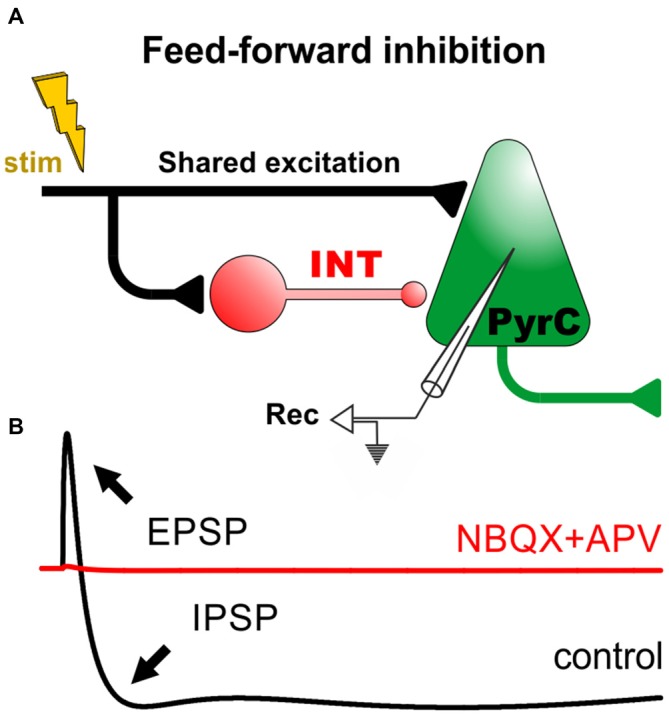Figure 1.

Feed-forward inhibitory circuits and the input/output function of cortical pyramidal cells. (A) Diagram of a minimal circuit with feed-forward inhibition (FFI). The circuit consists of an excitatory projection (in black) that drives an interneuron (INT) and a pyramidal cell (PyrC). The INT makes a synaptic contact with the PyrC. (B) The lower panel displays a cartoon of a prototypical intracellular recording from the PyrC in control conditions (black trace). For example, in the hippocampus and cortex, activation of the excitatory projection generally produces a monosynaptic excitatory postsynaptic potential (EPSP), followed by a di-synaptic fast inhibitory postsynaptic potential (IPSP; GABAA-receptor-dependent) and a slow IPSP (GABAB-receptor-dependent). In these conditions, the addition of ionotropic glutamate receptor antagonists (NBQX+APV) blocks all synaptic responses, revealing the polysynaptic nature of FFI in these circuits (red trace; McCormick, 1992; Treviño and Gutiérrez, 2005; Treviño et al., 2007, 2011).
